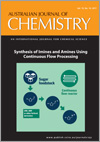
Australian Journal of Chemistry
Volume 70 Number 10 2017
CH17036Synthesis of Imines and Amines from Furfurals Using Continuous Flow Processing
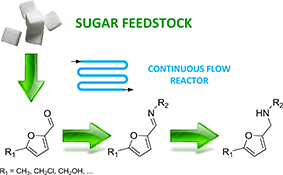
A simple procedure for the condensation of the bio-derived furfurals, 5-(methyl)furfural (MF) and 5-(chloromethyl)furfural (CMF), with primary amines is described. The experiments were conducted in both batch and flow conditions, with reaction times as short as 60 s. Mild reaction conditions were necessary for CMF in order to selectively react on the aldehyde and not the methyl-chlorine group.
CH17060Electrophoretic Deposition of SnFe2O4–Graphene Hybrid Films as Anodes for Lithium Ion Batteries
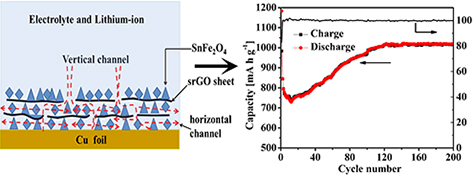
SnFe2O4 has been widely used as a magnetic material or catalyst for the oxidative removal of organic pollutants, but never used as an electrode material in lithium ion batteries. In this study, binder-free SnFe2O4-rGO hybrid films with both horizontal and vertical channels were fabricated through electrophoretic deposition to present excellent electrochemical performance of lithium ion batteries.
CH17108Friedel–Crafts Chemistry. Part 48. Concise Synthesis of Condensed Azaheterocyclic [1,8]naphthyridinones, Azepino-, Azocino-, and Azoninoquinoline Systems via Friedel–Crafts Ring Closures
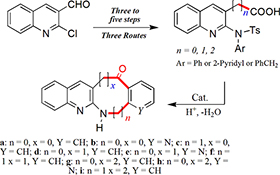
Heterocycles fused to quinoline frameworks widely occur in many biologically active natural products and in medicinally important drugs. Our strategy represents the first collective synthetic concise and efficient entry to nine novel condensed tetracyclic quinolinones by Friedel–Crafts cycliacylations. The simplicity and wide variability of the procedures highlights the efficiency of the methodology for constructing complex fused-ring systems.
CH17194Studies on Orpiment (As2S3) Quantum Dots and their Self-Assemblies

Orpiment (As2S3) quantum dots (QDs) were first synthesised through top-down and bottom-up routes, and exhibit strong blue photoluminescence emission. They were effective against murine melanoma B16 cells through induction of apoptosis. Moreover, self-assemblies of orpiment QDs were fabricated by destroying the protective surface ligand layer surrounding the inner orpiment cores by addition of an acid.
CH17192Synthesis, Characterisation, and Photocatalytic Behaviour of Mesoporous ZnS Nanoparticles Prepared Using By-Product Templating

In this research, relatively high surface area mesoporous ZnS nanoparticles have been synthesised using two different media. The mechanism of the by-product assisted synthesis of the prepared mesoporous ZnS nanoparticles in EtOH has been investigated using field emission scanning electron microscopy, transmission electron microscopy, powder X-ray diffraction, diffuse reflectance spectroscopy, N2 adsorption–desorption, and FT-IR spectroscopy analyses.
CH17203Attempted Synthesis and Unexpected β-Fragmentation of a Hindered β-Keto Nitroxide

The attempted synthesis of a β-keto imidazolidinone nitroxide by oxidation of the β-hydroxy imidazolidinone precursor led to an unexpected ring-opening reaction. A β-fragmentation mechanism is suggested, rather than a Baeyer–Villiger rearrangement.
CH17078Ligand-Stabilized ZnO Quantum Dots: Molecular Dynamics and Experimental Study
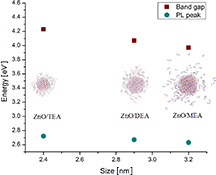
Different aminoalcohol ligands (TEA, DEA, and MEA) were found to affect the size and optical properties (band gap and emission peak) of ligand-stabilized ZnO quantum dots. Ligands of higher polarity and larger molar volume produce smaller, more monodisperse ZnO quantum dots. As the size of ZnO quantum dots decrease, the optical properties are blue-shifted.
CH17072A Highly Sensitive Non-Enzymatic Sensor Based on a Cu/MnO2/g-C3N4-Modified Glassy Carbon Electrode for the Analysis of Hydrogen Peroxide Residues in Food Samples
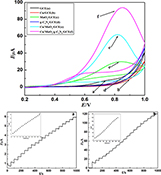
A simple and highly sensitive method for the detection of hydrogen peroxide in food samples was developed by electrodepositing Cu and MnO2 onto a g-C3N4 coated glassy carbon electrode. The sensor exhibits high selectivity, good stability, and reproducibility.
CH17176High Catalytic Activity of Peptide Nanofibres Decorated with Ni and Cu Nanoparticles for the Synthesis of 5-Substituted 1H-Tetrazoles and N-Arylation of Amines
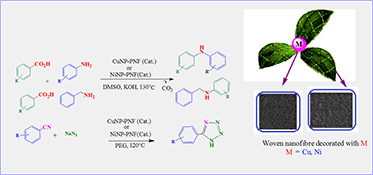
Peptide nanofibres with arginine as a building block have been prepared via a self-assembly method and decorated with Cu and Ni nanoparticles. These prepared nanostructural compounds present a unique catalytic activity for the synthesis of 5-substituted 1H-tetrazoles and the N-arylation of amines.
CH17172Cobalt Species Active for Nitrous Oxide (N2O) Decomposition within a Temperature Range of 300–600°C

Catalyst supports play a vital role in the formation of active cobalt sites for the N2O decomposition reaction. Co2+ and Co3+ are the highly active cobalt species. The acidic properties of the ZSM-5 support changes with the cobalt loading.
CH17227Efficient Synthesis of an Indinavir Precursor from Biomass-Derived (–)-Levoglucosenone
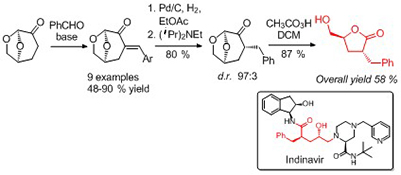
The hydrogenated derivative of levoglucosenone was functionalised at the α-position with aldol chemistry using a series of aromatic aldehydes. The benzylidene derivative was then hydrogenated stereospecifically and the product transformed using a Baeyer–Villiger reaction into (3R,5S)-3-benzyl-5-(hydroxymethyl)-4,5-dihydrofuran-2(3H)-one, a chiral building block that can be used for the synthesis of the protease inhibitor indinavir.
CH17201Solid-Phase O-Glycosylation with a Glucosamine Derivative for the Synthesis of a Glycopeptide

An effective, high-yielding strategy for O-glycosylation is studied and applied in solid-phase synthesis.



